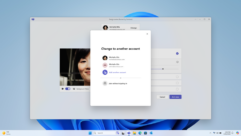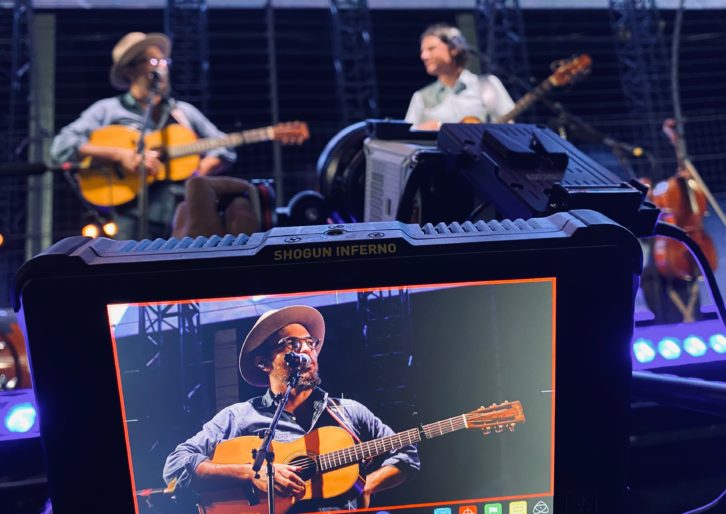
How can the supercharged experience of a live concert survive in the COVID-19 era and still make a profit? 7 Cinematics may have found a way. They teamed up with the Avett Brothers for a huge COVID-safe, drive-in concert at Charlotte Motor Speedway on August 29th and streamed it to the world. CEO Adam Paul has the story for us.
SVC: Adam, thanks for joining us from 7 Cinematics in Greensboro, North Carolina. Great to have you with us.
Hey, man, thank you. I love being here and we’re excited to talk about this stuff.
Before we get into the Avett Brothers concert at Charlotte Motor Speedway, which is probably a harbinger of things to come, tell us about 7 Cinematics. You’re a production company specializing in live streaming, live broadcast, original productions, and live music.What goes on behind the doors there?
Yeah. 7 Cinematics is a labor of love. It’s something we kind of fell upon about 12-15 years ago. I was in the television production business and we did a lot of outdoor programs. We wanted cool music on our show and there wasn’t really any way to get it with licensing. So we just invited the bands to come fishing with us and that’s how we started filming live music. So as it grew from there, we moved to Greensboro. We sold to a larger sports company and at the time I said to them, “Hey, guys, I think we’ve got something here with cinematic storytelling of live broadcasts.” Sports has always been very matter of fact; it’s an event that has an unforeseen ending to it. But music is really about storytelling and taking people away from their problems. So that’s really what we try to do at 7 Cinematics. Try to have a little fun doing it and have a good time. We try to do the impossible.
And you’ve grown quite a bit. You’ve got office locations in several parts of the country.
Yeah, we really have. I don’t know if it’s blind luck, determination, grit or whatever, but we’ve had some really big productions that we’ve been able to pull off around the world from the Red Hot Chili Peppers at the Great Pyramids to Kanye West’s Sunday Service, to the Brothers 50, to a myriad of other ones. But yeah, we’ve really grown. I think part of the reason is because we take our artist-centric and management-centric and event-based approach that it’s not about us. Sometime video guys just come in and it’s all about video. We’re the opposite of that. We want not to be called “vidiots.” We want to be part of the team. We want to be liked and make it easy on everybody, not hard on everybody. So yeah, we’ve grown. We’re in Nashville, Tennessee. We have a full studio and truck there. And in Los Angeles, California full postproduction studio, Da Vinci. And a Focal 5.1 system headquartered in Greensboro, North Carolina. And we have a few editing bays down in Charleston, South Carolina also.
How did 7 Cinematics and the Avett Brothers come together for this huge event at Charlotte Motor Speedway?
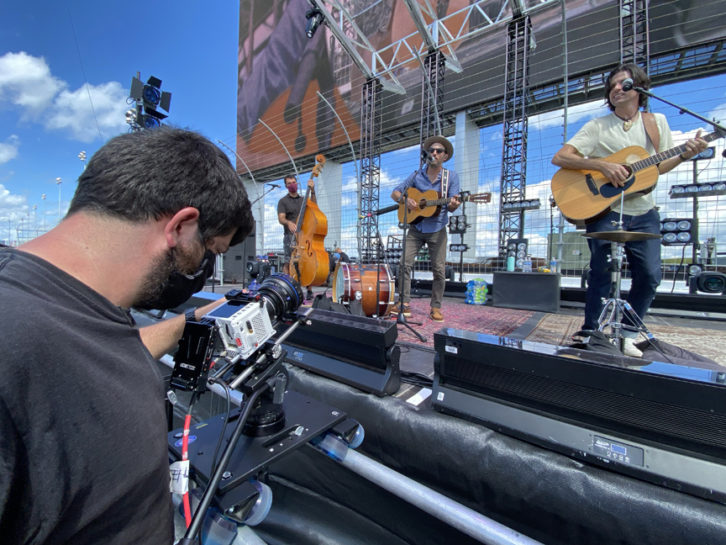 The Avett Brothers and 7 Cinematics and our team have made magic together for a while. In 2014, we did our first cinematic livestream with the guys in the Avett Brothers for a thing called the Legendary Giveback. My good friend and old employee, Angie Smith at Cheerwine brought us in and we did a production at the Tennessee Theater there. We ended up winning an Emmy for technical direction for that broadcast. The second we got home that night and we watched the footage we all knew that we had something big. Our cinematic style and the way we do things has always fit real well with the Avett Brothers style; with their look and their lighting. So we have done a lot of things with them. We’ve done some music videos and a bunch of other content. We just did a PBS primetime special with them from Red Rocks and then we did this.
The Avett Brothers and 7 Cinematics and our team have made magic together for a while. In 2014, we did our first cinematic livestream with the guys in the Avett Brothers for a thing called the Legendary Giveback. My good friend and old employee, Angie Smith at Cheerwine brought us in and we did a production at the Tennessee Theater there. We ended up winning an Emmy for technical direction for that broadcast. The second we got home that night and we watched the footage we all knew that we had something big. Our cinematic style and the way we do things has always fit real well with the Avett Brothers style; with their look and their lighting. So we have done a lot of things with them. We’ve done some music videos and a bunch of other content. We just did a PBS primetime special with them from Red Rocks and then we did this.
Dolph called me probably four weeks before the show and said, “Hey, we’re doing this thing. What do you think? Is this the opportunity we’re looking for?” I said, “Yeah, I think this is it. One, it’s an opportunity for something big and something great. But I think it’s also an opportunity with us trusting you and you trusting us and the other production partners. We have a lot of trust coming together and I think we can do this not only for us, we can do it for the fans and we can do it for the whole industry.” I think all the pieces of the puzzle fit together so that we can have a successful largescale event in this COVID-19 world and not set us back, actually push us forward.
So that’s how it all started. And we brought in nugs.net for the distribution. They’ve been a long, close friend of ours. We’ve done millions of projects with them. And John Keefe over there, said “yeah, let’s tie all these pieces of the puzzle together and just roll with it.” And there you have it.
It sure is great the way it came out and this is no small feat. You had a live concert, which is tough getting the sound right and the cameras right, but this was also streamed live online. And you had people in their cars driving in and had to get the sound to them. One of the unusual things that we’re dealing with in the COVID era is live audience response. Can the performers still pick up on the crowd response? How does that work now?
Well, you know, we didn’t know going into this. That’s the dadgum honest truth. And it was a feat, to say the least, but I want to say one thing. Coming from the business, just the live event side, dang, man, some of these events you go in on tour and everybody’s grouchy and everybody’s been on tour and everybody’s tired. Every person working there was so happy to be working and so proud to be working and so honored. We were all being safe. We were all being respectful. We were all being kind. It was such a good experience for that. I think we were all just so dang happy to be back in a live production world with a deadline and something we had to pull off. For the people who go out and do these crazy things all the time, you kind of get used to it. And then you come home and you sit around and it’s kind of hard to relate. You just want to do go what you do. So I think everybody was happy just to be doing that.
It was a huge feat and learning at the same time, I mean, the band obviously had to perform. The lighting and the stage and all that stuff had to work seamlessly through the guys at SES and G2. But the production and the show fell kind of squarely on our backs, which I was not used to. I’m used to the broadcast side falling on our back, but the whole dadgum show… So when it came to feedback, the two cool things that I took was yes, you could hear the crowd and it got very exciting. The opening scene was a ’64 Ford Galaxy 500 in the Winner’s Circle and they all got in it, it’s Seth’s car, and they drove around the track. So we had the drone, and we did a live patch of our drone in 4K and we followed them around the track. It was put up on the big screen, so people were like, “Is this real?” And then all of a sudden you see this car coming down the track and the roar. That’s something I hadn’t heard in seven months and it was just so powerful. Then, when the show was over I didn’t realize that the new applause was honking your horn. I usually don’t like the sound of honking horns but boy, those honking horns and people flashing their lights was one of the coolest things I’ve ever heard.
How did you get the sound signal out to all the cars?
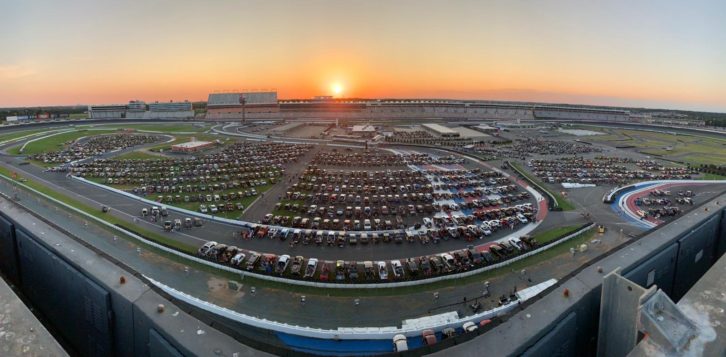 It goes through an FM transmitter. So it’s just like the old drive-in theaters where you come in and you tune your car to the concert. We had some interesting issues with syncing everything with video and audio and getting all that together. I think we did a pretty good job of getting it all synced up in different spots with some delay. I mean, Charlotte Motor Speedway, you’ve got to understand, that’s a big, big place. I mean, It’s a mileand-a-half oval. And so we had to bounce a signal from my truck to the box at the bottom of the fiber patch and all the way across the infield to the broadcast box and then all the way back across. We were bouncing signals everywhere. We had to match video and audio and timing and sync and all that, which was quite a feat, but at the same time I think it’s cool. That’s the stuff I like. That’s the puzzle I like to work.
It goes through an FM transmitter. So it’s just like the old drive-in theaters where you come in and you tune your car to the concert. We had some interesting issues with syncing everything with video and audio and getting all that together. I think we did a pretty good job of getting it all synced up in different spots with some delay. I mean, Charlotte Motor Speedway, you’ve got to understand, that’s a big, big place. I mean, It’s a mileand-a-half oval. And so we had to bounce a signal from my truck to the box at the bottom of the fiber patch and all the way across the infield to the broadcast box and then all the way back across. We were bouncing signals everywhere. We had to match video and audio and timing and sync and all that, which was quite a feat, but at the same time I think it’s cool. That’s the stuff I like. That’s the puzzle I like to work.
Yes, over a huge area like that you’ve got all kinds of issues probably with sound delay.
The SES guys did a really cool job of kind of intimately lighting the show–lighting it for video. Pete Schroff, the lighting designer at Avett Brothers did a killer job of lighting. Really the only front 150 cars could really see any detail on the stage. Everything else had to be seen on the screen. So it was crazy having to do kind of both. A lot of times we’ll come in and we’ll do a broadcast, I’ll direct the broadcast and then I’ll bring in my TD or my engineer and just let them mix some close-up shots for an IMAG. But this one we did both at the same time. Both were the same content and everybody got to see the same show all the way around the world, from the people that were there, to the farthest reaches of anybody who watched it online.
If somebody came to you and said “we’re planning to do something like this” what are the basics for producing a live concert that’s both COVID-safe and profitable?
Well, the first thing you’ve got to do is hire us. [Laughs] That’s number one. I’m just kidding. But I would say planning as much as you can, get on location and run tests and plan and figure out everything, and then just expect the unexpected. Bring as many redundancies as you can. We had our fiber converters that we shipped out two weeks ahead get held up in Kernersville, North Carolina. So make sure you’ve got backup plans for everything and just kind of roll with the punches. This old fisherman guy taught me this thing one time. He said, “You can’t ever be a brilliant teacher without always being a brilliant student first.” So I try to always be a brilliant student regardless. I think we learned all kinds of different stuff on this set, but man, it felt good to give elbow bumps, shoe bumps and fist bumps to everybody at the end of it that we’d pulled it off and we got to do a live event again.
Tell us about the video part of it. What kind of cameras did you use and from where were all of those controlled?
We’ve got a new 4K Blackmagic system that we’re using via SMTPE fiber. We’ve also have a system that’s half Blackmagic and half a brand new RED Komodo. We were lucky enough to work with Clark at RED Camera. It’s a 6K camera, but it’s really designed for 4K streaming. We got two Stormtroopers, and then all cinematic lenses and jibs and all the different cinema-type support elements. Zeiss cinematic glass.
That sounds like a lot of cable to pull. How far away was the control point from all of these sources?
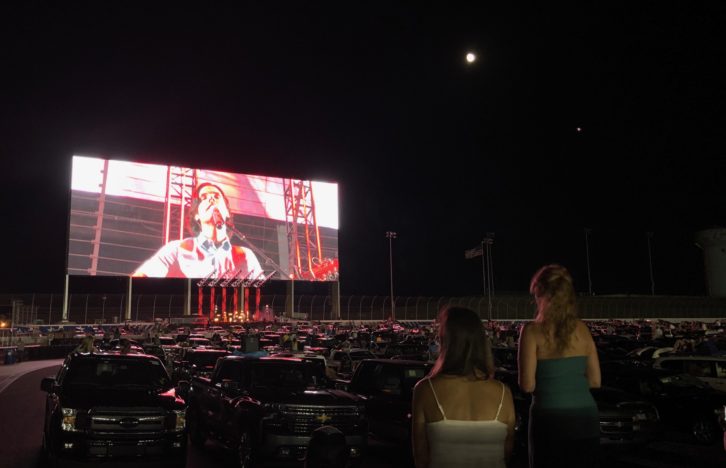 It was not the most cable we’ve ever pulled, I will say that. It wasn’t too bad, because we actually hid the truck underneath the Jumbotron and we actually kept the cameras fairly close so 400 or 500 feet was the longest cable run that we had.
It was not the most cable we’ve ever pulled, I will say that. It wasn’t too bad, because we actually hid the truck underneath the Jumbotron and we actually kept the cameras fairly close so 400 or 500 feet was the longest cable run that we had.
That’s not too bad.
Yes, we did another production, this electronic festival called Lost Lands up in Ohio a couple of years ago. That show we ran 1.4 miles of cable. We had Hurricane Matthew come down on us. It was 11:00, the show was over. I said, “Guys, do you want to wait until the morning to come pull this cable and wrap out or do you want to put everything we got into it tonight before this storm comes because it’s gonna start raining at 4:00 AM?” They’re all like, “Tonight. Let’s do it. Let’s get it done. Let’s pull the Band-Aid off.” That’s how my crew is always. They’re like, “Tonight. Let’s go.” At 3:59 we felt the first raindrop and we closed the doors behind it. But I don’t know if I’ve ever seen any dirtier crew in my entire life. So, no, it wasn’t the most cable we’ve ever pulled.
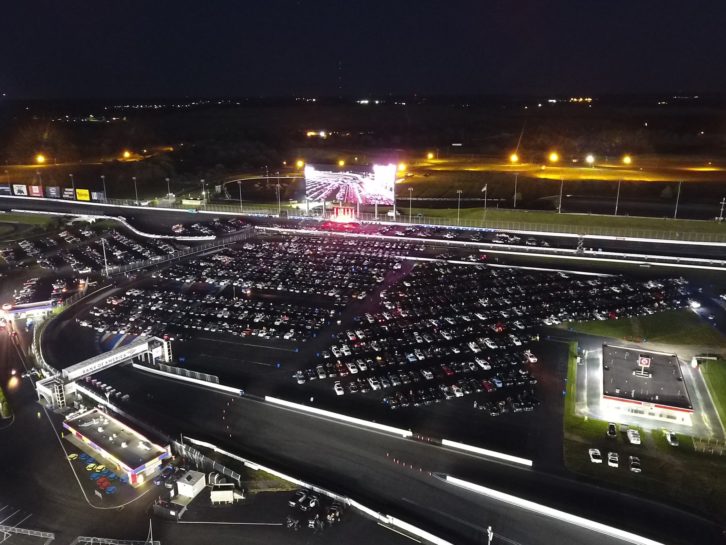 You told us about the hang-up with the fiber converters; were there any other surprises? What was the most difficult part of this thing?
You told us about the hang-up with the fiber converters; were there any other surprises? What was the most difficult part of this thing?
You know, I think it all was placement of Internet and getting Jacob, our encoder with nugs.net to be able to be next to us so that we could all work together if there was a problem. We were originally going to have him in the broadcast booth all the way across and so we had to work through some interesting scenarios. What we ended up doing was sending the Internet down the fiber and bussed it from up there in two different 150 MB-dedicated lines to both of us instead of sending him up there, which I thought was pretty dadgum cool. It never ceases to amaze me whatever you can do with optical fiber.
Yes, just not having the potential grounding problems that you can have in the audio and having to chase audio hum around.
Speaking of the audio, we had two different audio mixes. We had one for audio broadcast, the one that was basically what you would call front of house that went out to the FM transmitters. We had two different line cuts on the same truck all coming through us and then being distributed out.
And communication. I guess the intercom alone would be a challenge to make sure everybody on the crew can hear what they need to hear.
We have this wireless comm system and there was so much RF because of everyone’s FM transmitters being on. We had something in between us that was just killing us wirelessly and we couldn’t get around it. So I had to cut the show on the walkie and on a regular comm system. It made for a couple of thumb blisters by the end of it, but we got through it.
Wow, a walkie in one hand the intercom headset at the same time. Intercom can be sometimes be the trickiest part of it to make sure you don’t get into a Tower of Babel situation.
Yeah. You know, I think, too, it’s like you understand how important it is. You know, we can be good and creative, and the cameras can look as good, and the artist can be playing great, but if the cameraman can’t hear me and we’re missing shots and we’re not communicating… Everything has to work perfectly. I think you well know that this is the whole live performance thing–it’s well known for everything not working perfectly. It’s kind of how it goes. So we try to do the best we can every time.
Yeah, that’s a live show for you, just pulling the pin and hope you don’t let go of the device.
[Laughs] You’re correct.
So what’s coming up next for 7 Cinematics?
We’ve got some really cool shoots. Can’t tell too many details. We’ve got a big thing coming at Red Rocks Amphitheater that I’m really excited about. Red Rocks is a place I hold near and dear to my heart. Love it so much. I think it’s just such a special place. So we’re going to get an opportunity to do some stuff there. I’ve got a little thing on Catalina Island coming up. I wish I could tell you more about these names, but you know how it goes with these livestreams. Until they announce I’m not allowed to say anything. But we’re extremely busy, very grateful and very thankful to be extremely busy right now. We’ve got some post-production pieces coming out and just both sides of our business have been pretty robust. On our post-production side, I’m building content for people. We did 56 concerts last year; live shows. We ISO record everything in 4 and 6K, so a lot of what really made it successful during this COVID thing was not only continued broadcast, but we’ve also had all this incredible content that we can go and bring back up. So that’s been good. I know this industry is hurting right now and I want to be part of what the future shows and a part of the way out for all of us. We all know that we want to go back to 25,000 screaming fans in an arena. That’s what we want to do. And so anything that we can do right now to help and be somebody who brings good hope that’s what we want to do, man.
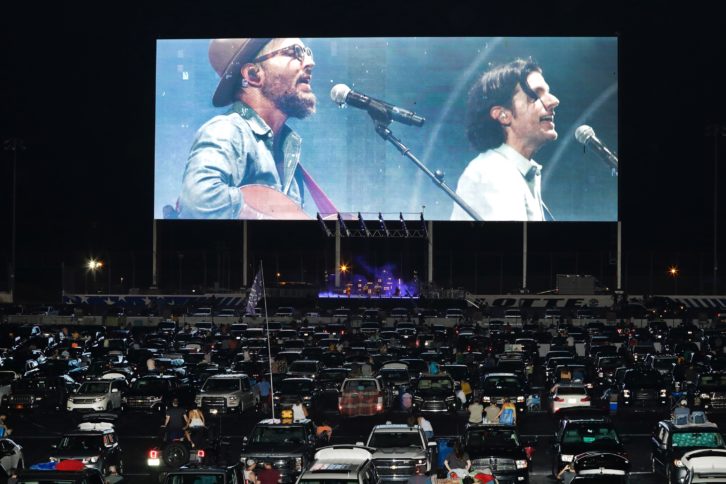
Well, that sure beats the heck out of having cardboard cutout fans at a baseball game.
It absolutely does. It’s been fun figuring out ways to do this creatively. I’m glad that people like Dolph and the Avett Brothers listened and liked my creative ideas for this and I’m glad that a lot of people out there have been nice enough to listen to our input. It was nice to start this thing and have it work and have people listen and everybody do their job and it all come together. Everybody came out of that- -fans, myself, the management for the band, other production partners on the show–everybody just came out of it with this incredible feeling of we all came together, we all did this, this was big, and man, do I want to do it again.






